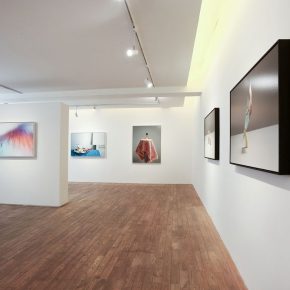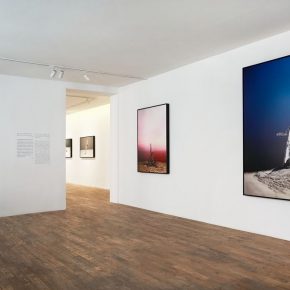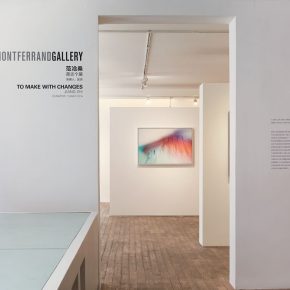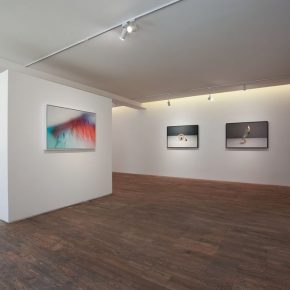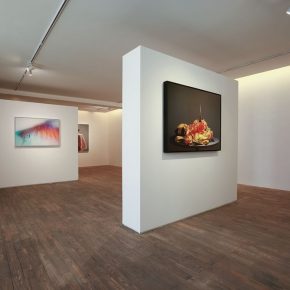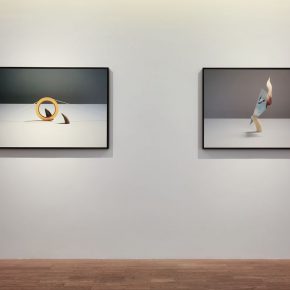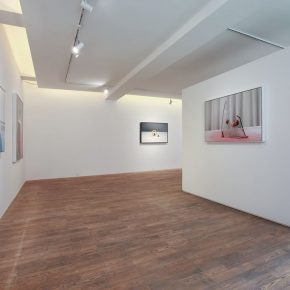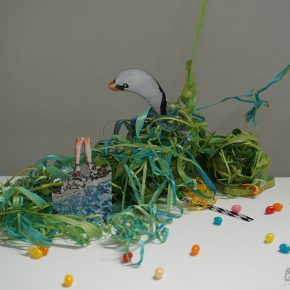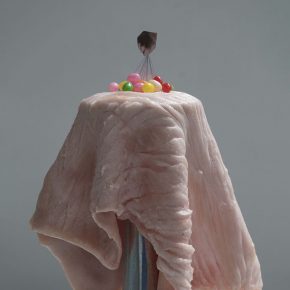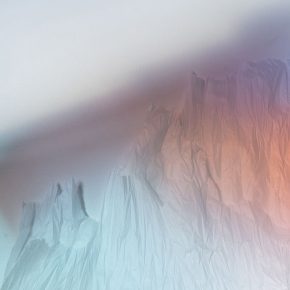
“Fan” means rules, laws and models, and also means to follow the law; “Cang Sang” means that things are uncertain and constantly changing. “Fan Cang Sang” is to make changes and change with making.
– Jiang Zhi
On June 17, 2017, the artist Jiang Zhi’s latest solo exhibition entitled “To Make with Changes” opened at Hadrien de Montferrand Gallery, it is curated by Yuan Fuce, unfolds around Jiang Zhi’s new series of photographs “Emanations” as well as three works from the series “Among the Destined”. As a photographic exhibition, it does not present a sensory world under the lens of the artist, nor does it discuss how to produce images and the aesthetics behind them, but discusses how our vision and perception are related to the images. Discuss the mechanisms and rights which are perceived and uses images as a basis.
Since 1997, Jiang Zhi has started to be engaged in the creation of photographic art, and his photographic practice has combined sophisticated concepts with a strong aesthetic element, his creation of visual images is an open response-inviting structure, always touching the inner feelings of the viewer, “Love Letters”, his most well-known series to date, presents blooming flowers blended with flames, it is both in full bloom and dying, the intense conflict of emotions does not have an obvious logic, but it reveals a special beauty and psychological feelings. “Among the Destined” features fictional and silent landscapes made out of tiny carbon fragments and iron powders. The new series of photographs “Emanations” is Jiang Zhi’s new recent thinking of images, considering “To Make with Changes” as the theme to further explain the influence of the subjective initiative on so-called things. “Fan” means rules, laws and models, and also means to follow the law; “Cang Sang” means that things are uncertain and constantly changing. “Fan Cang Sang” means the “way of change”, and also emphasizes the dialectical relation between the passive and initiative.
We are now in a world of images, where the images represent our psychological structure, spiritual structure, social structure, and a key link connecting myself with other people and the world, referring to the relationship between “we” and “world”. That is why a lot of cognitive values are derived from images in the real world, for example, worship, taboo, our recognition and approval of images is not limited to the image itself, but surrounds images to produce a common value and power system, for example, in the commercial consumption, do we consume the image itself when we choose an image? In fact, we generally enter society with a recognition system of values for this set of images. Therefore, Jiang Zhi believes that the image is not “a material incarnation” or “a human body”, but a psychological body, and the image is linked with the human heart. Many images form a state “commonly seen”, with meanings which are fixed and complete, which are not needed to be saved, but our perception imprisoned by the strong mechanism with an intrinsic meaning system should be saved.
To produce the new perception of the image and its application are more important than the image production, which is the aesthetic mission of Jiang Zhi’s new work of “Emanations”, he disorganized and replaced the aesthetic habits we have standardized, but establishes a new sense of presence in the experiment of images. The exhibition lasts until August 26.
Text by Zhang Wenzhi, translated by Chen Peihua and edited by Sue/CAFA ART INFO
Photo by the organizer


